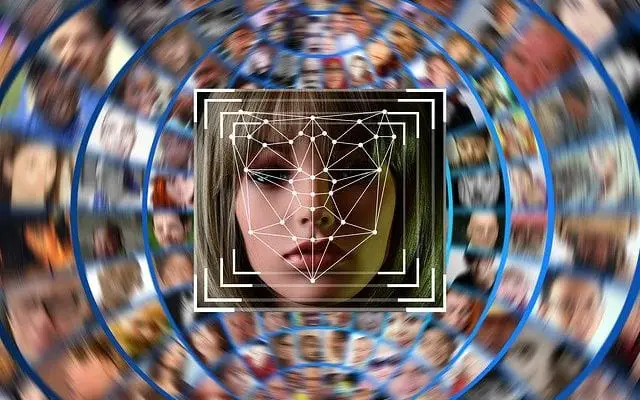Biometric facial recognition technology adds an extra layer of security and convenience for not just the consumers, but businesses as well.
Facial recognition is a biometric way of identifying an individual. A facial recognition system utilizes biometric technology to detect facial attributes from an image or a video. Once the face has been detected, it matches the information against a database of known identities to find an exact match. This innovation has the ability to accurately verify an identity, whether they are present online or in person.
The global market for facial recognition technology is forecasted to increase to approximately USD 8.5 billion in 2025, up from a value of USD 3.8 billion in 2020. This is because facial recognition has numerous industrial applications, as it can be used for a variety of tasks ranging from surveillance to marketing.
In this article, we will be looking at how facial recognition is being used by various industry sectors and how the technology actually works. Let’s begin.
How Facial Recognition Works
You may be skilled at identifying and remembering faces. You probably consider it a simple task to recognize the face of a family member, colleague, or neighbor. That is because you are familiar with their facial characteristics — the shape of their eyes, nose, or mouth.
In simple terms, that is exactly how a facial recognition solution functions, but on a much larger, algorithmic scale. Where you recognize an individual’s face, facial recognition systems detect data. That data can be saved and accessed later. For example, a Georgetown University study revealed that half of all American adults already have their pictures stored in more than one facial recognition database that can be used by law enforcement and government agencies.
So how does this actually go about? Technologies may differ, but here are the basic stages:
Stage 1
An image of your face is captured either through a photo or a video. Facial recognition technology has the ability to detect faces whether they appear alone or in a crowd.
Stage 2
The geometry of your face is read by facial recognition software. The main facial features that are detected include the distance between the eyes, the shape of the nose and chin, the contour of lips, or the distance between the forehead and chin. The biometric software recognizes facial landmarks that are unique to each individual to form a “faceprint” or a “facial signature”.
Stage 3
Once your face has been captured and stored in a database to form a facial signature, it is then compared against a database of known identities.
Stage 4
In the last step, an exact match is found to accurately determine the identity verification of an individual. Additionally, your faceprint is saved in the facial recognition database and may be accessed later by authorities.
Now that we understand how it works, let’s take a look at the way this technology is being used in the real world.
Facial Recognition Technology: Use Cases
Numerous private and governmental organizations use facial recognition technology. Here is a list of them:
- The U.S. Government at Airports
Facial recognition software can track and monitor individuals entering and leaving an airport. The U.S. Department of Homeland Security has been utilizing this technology to identify and verify individuals that may be overstaying their visas or might be under some travel restriction. Back in 2018, customs officials at Washington Dulles International Airport used facial recognition for the first time to arrest an imposter attempting to enter the country.
- Smartphone Companies
Industry giant Apple has been using facial recognition technology to enable customers to unlock their phones using their facial features. In this way, unauthorized users of mobile devices can be kept away. According to Apple, the probability of a random person unlocking an iPhone is about 1 in a million.
- Social Media Platforms
Social networking sites such as Facebook have employed facial recognition technology that is used for tagging friends and family of the user. The aim behind this is to make the site more interactive and user-friendly, by automatically linking pictures to profiles.
- Retail Stores
Retail stores now have the opportunity to use surveillance cameras in combination with online facial recognition systems to scan the faces of shoplifters. This way, shop owners can identify suspicious customers, locate potential shoplifters and substantially reduce monetary damages.
FAQ
How does facial recognition work?
In simple terms, that is exactly how a facial recognition solution functions, but on a much larger, algorithmic scale. Where you recognize an individual’s face, facial recognition systems detect data. That data can be saved and accessed later. For example, a Georgetown University study revealed that half of all American adults already have their pictures stored in more than one facial recognition database that can be used by law enforcement and government agencies.
Additional Resources:
Artificial Intelligence
-- 728x90/300x250 -->


